Based on the Verne stories Robur the Conqueror and Master of the World this movie takes place in the year 1868 when a madman by the name of Robur uses an amazing airship to enforce world peace, but his method isn’t all that peaceful as it relies mostly on bombing nations into submission. When three intruders end up on board his amazing airship things get a little more complicated for poor Robur and the mad genius must decide whether to kill them or let them stay. If this seems a tad familiar just replace airship with submarine and you will easily recognize the plot of 20,000 Leagues Under the Sea, with Vincent Price standing in for James Mason's Captain Nemo and Charles Bronson for Kirk Douglas.
This is quite a departure from the source material as the Robur found in the Verne stories valued personal prestige over anything as trivial as world peace. In the book Robur wanted his fellow airship enthusiast to agree with him that “heavier-than-air” craft, such as planes and helicopters were more feasible than “lighter-than-air” ones, such as balloons. He didn’t seem to give two figs about nations being at war, he just wanted everyone to say he was the Master of the Air.
My vote goes to the man who can build this thing.
The film does include an aeronautic debate but instead of the feasibility of one type of aircraft over another it’s about whether a balloon should have a propeller on the front of the craft or at the rear, and the two men that are at the head of these debates are weapons manufacturer Prudent (Henry Hull) and his soon to be son-in-law Phillip Evans (David Frankham). Their heated discussion is ended when government agent John Strock (Charles Bronson) arrives to request one of their hot air balloons to survey a mountain crater in Pennsylvania, one that has suddenly started to act more like a volcano than it should.I myself would assume Moses was up there talking to God.
Prudent and Evans agree to help and because the movie needs a female character – none appear in either of Jules Verne’s Robur stories – they bring along Prudent’s daughter Dorothy (Mary Webster), who is engaged to Evans. Shortly our small band of heroes pilot a balloon towards the mysterious mountain but they don’t get much time to survey anything as the minute they approach the mountain they come under attack from a missile barrage, which sends them crashing down inside the crater. That missile simply damages a hot air balloon, rather than blowing it to smithereens, is the true mystery here but with no time to worry about the realistic uses of ballistic explosives the movie quickly jumps to our intrepid group of heroes waking and finding themselves unwitting guests aboard the Albatross, a fantastic airship of Robur’s (Vincent Price) own design.“I’m sure you are all wondering why I’ve gathered you here today.”
The crux of the film deals with the conflict between Evans, who wants to immediately work towards an escape, and with Strock who wishes to hang around until he can find an opportunity to destroy the Albatross from within, of course, the real conflict between these two stems from the fact that Dorothy kind of finds Strock to be a better catch rather than her current and fairly dull fiancé. You’d think with a film that contains the primary threat of Vincent Price as a madman trying to bomb the world into submission it wouldn’t need romantic entanglements – and you’d be right – sadly the filmmakers begged to differ. The character of Evans is your standard “strawman” rival, who from the outset you know is not going to win the girl, especially if said rival is Charles Bronson.This guy basically has a Death Wish.
Master of the World contains one of the more egregious examples of this clichéd character with its depiction of Evans, a man who constantly calls Strock a coward – ignoring all the evidence to the contrary – and basically being a constant asshole for the film's entire running time, going so far as to tell Strock that he should have stated his intentions in destroying the Albatross to Robur, even knowing that this would result in Strock’s immediate execution because honour demands it. Evans doesn’t even get much of a redemptive moment he’s just a complete pompous jerk for most of the picture, even to the point of attacking Strock from behind and leaving him unconscious as the Albatross goes up in flames. What’s worse is the filmmakers don’t even have the decency to give Evans a noble death, instead he kind of aids Strock at the end, helping to cut the anchor line holding the Albatross to the island they’ve fled to, but even in that act it's more about self-preservation than true heroism."This means you won't kill me now, right?"
The plot of Master of the World has very little bearing on the source material – Robur’s plan of creating world peace through the destruction of weapons of war is completely cribbed from that of Captain Nemo’s goals – but what hurts the film the most is the obvious limits the film’s budget imposed on the production, they really had no chance of competing with 20,000 Leagues Under the Sea in that area and it shows. The sets that make up the Albatross are quite nice – with cool matte paintings used to help create the energy absorption engine rooms – but they pale in comparison to those of Disney’s Nautilus. Charles Bronson was a fine action star of the modern period but he was sorely out of place in a Victorian adventure tale, and his character is a pale imitation of Kirk Douglas’ Ned Land. Most of all the thrilling action of Robur’s attacks on the world’s nations consists entirely of stock footage, often from black and white films that were colourized to make them appear unified, and one must admit that when the key element of your movie, the one thing that people have come to see – which would be awesome destruction and spectacle – is just stuff stolen from other better movies, well that’s a problem. Worse is the fact that they didn’t even bother to use footage from the proper time period, at one point Robur bombs Elizabethan London.Now if the Albatross had been revealed to be a time machine as well...
What saves this film from being a complete waste of time is in the performance of Vincent Price – no surprise there – as no one can pull off the character of a mad obsessed genius as well as Price can, not even James Mason. Every moment on screen with Price is a treat, nobody can recite scripture like he can, and his ability to infuse such sympathy and pathos into the character of Robur almost has us wanting him to win in the end. There is certainly very little sympathy to be found with the war profiteering Prudent and asshat Evans. Sadly, the filmmakers bungled the chance of Robur returning for a sequel as the movie borrows from both Robur the Conqueror and Master of the World, which would have made writing a sequel script a continuity nightmare. This is truly a shame because it was in the book Master of the World - which was the name of the second book - that Robur returned in a new machine that he dubbed the Terror and it was a craft capable of operating as a speedboat, submarine, automobile, or aircraft.Now that is a movie I'd have loved to see.
Stray Observations:• The Albatross is fired upon several times from 17th-century navy ships but the canons on these types of vessels would have no ability to fire at an aircraft hovering directly above them.
• Robur has a magical telescope that allows the viewer to see things from a ground-level viewpoint despite them hovering over the target.
• We spend way too much time with the comic-relief cook, whose kitchen is always getting messed up by Robur’s violent aerial maneuvers.
• The Albatross cruises over such stock footage from Laurence Olivier's Henry V, the battle of Trafalgar from That Hamilton Woman (1941), and The Four Feathers (1939).
• Robur orders the Albatross down closer to the battle for no sensible reason – the ship is a bomber and not a strafing craft – and thus he is fully responsible for damaging his own craft. Who needs heroes when the villain is this bad at his job.
• Strock creates a makeshift gunpowder fuse that takes several minutes to reach the explosives, opposed to the few seconds it would realistically take.
• The explosion in the armoury should also have instantly destroyed the Albatross, not merely causing it to slowly crash into the sea, where it “eventually” explodes.
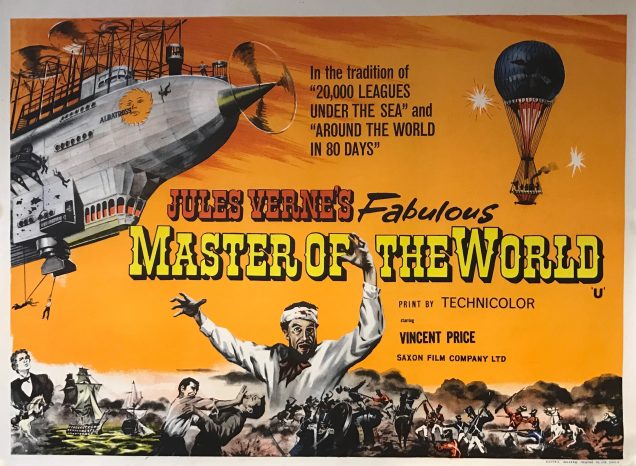
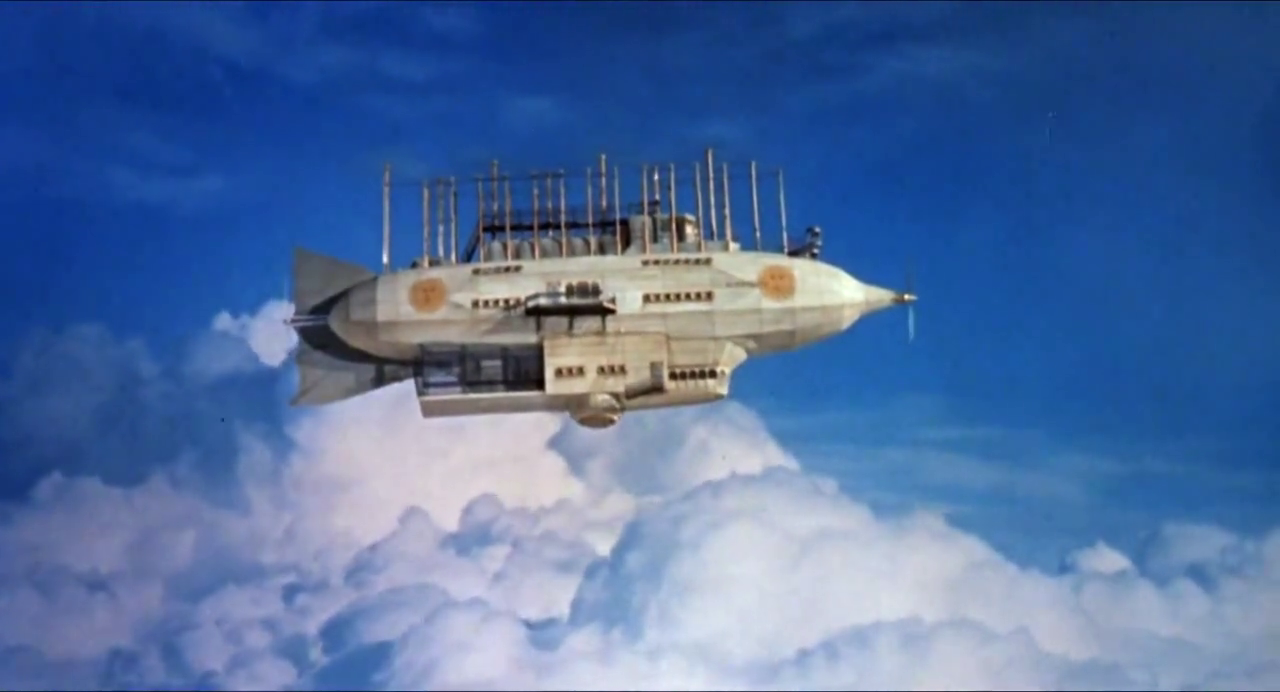
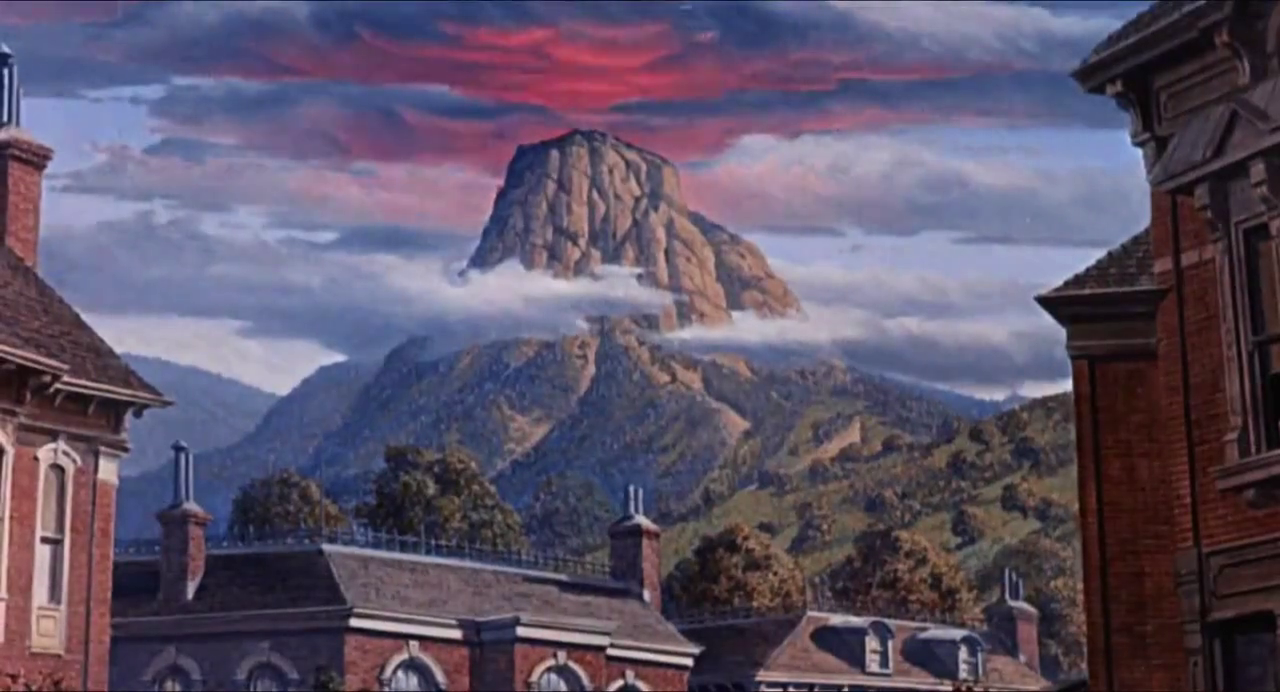
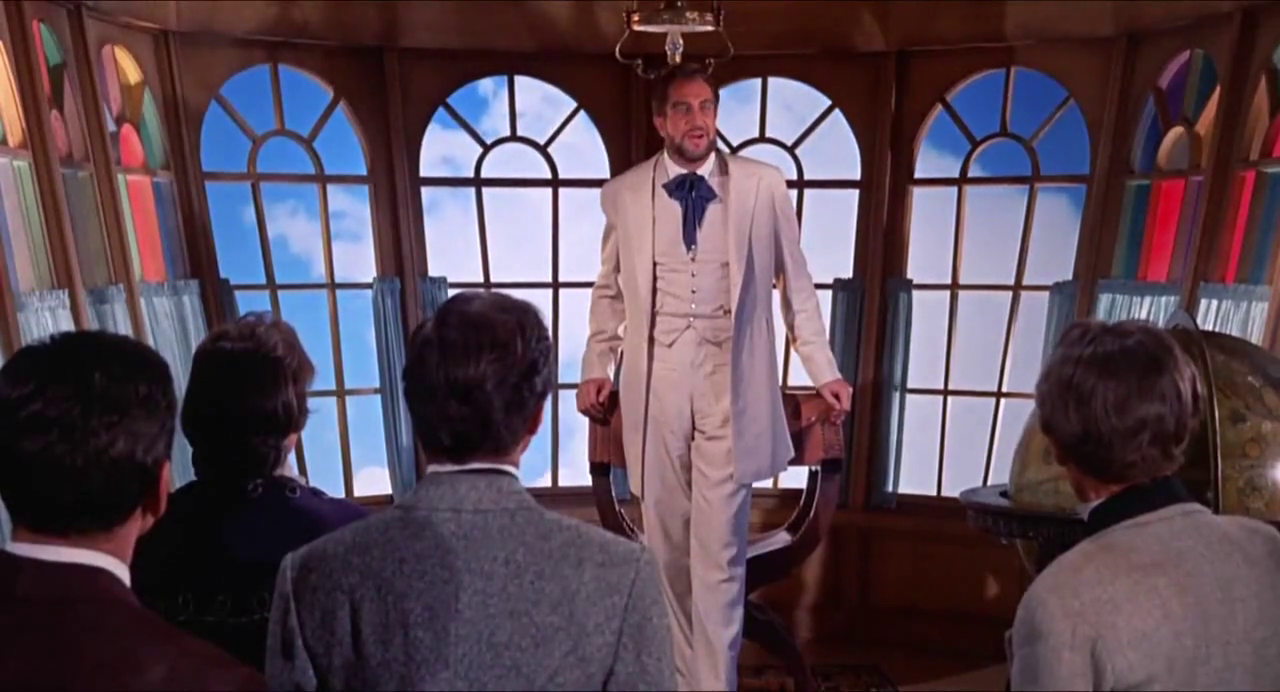
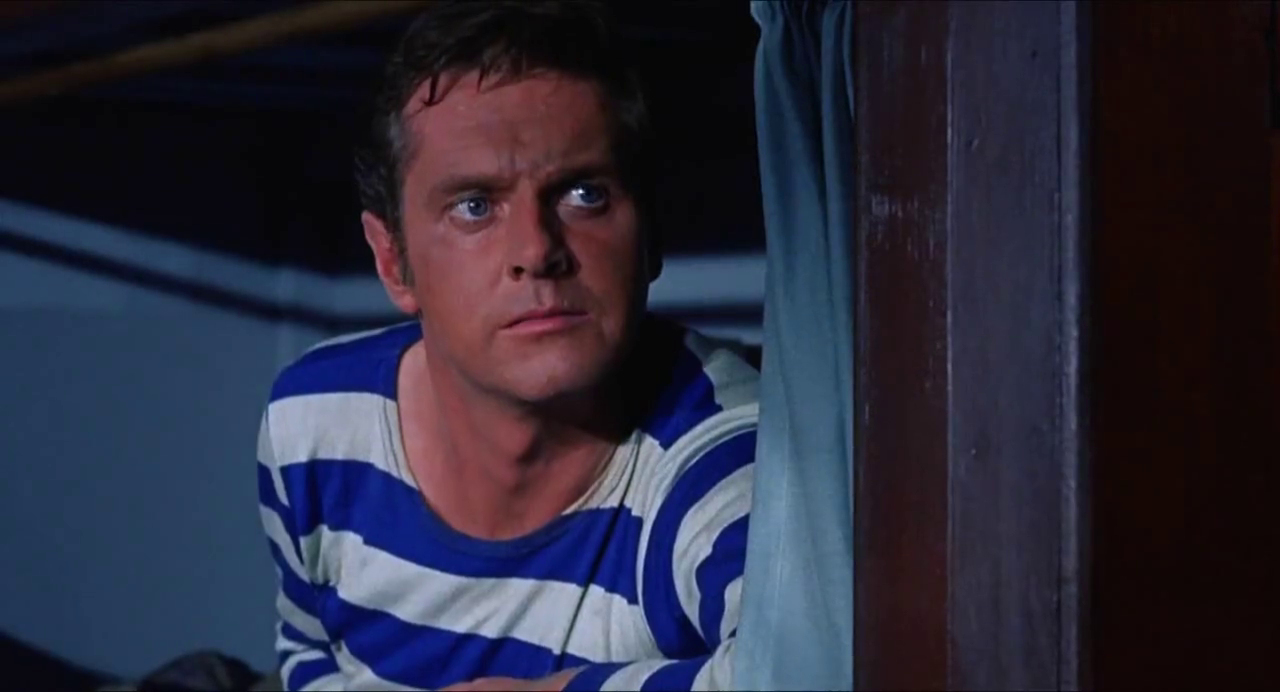
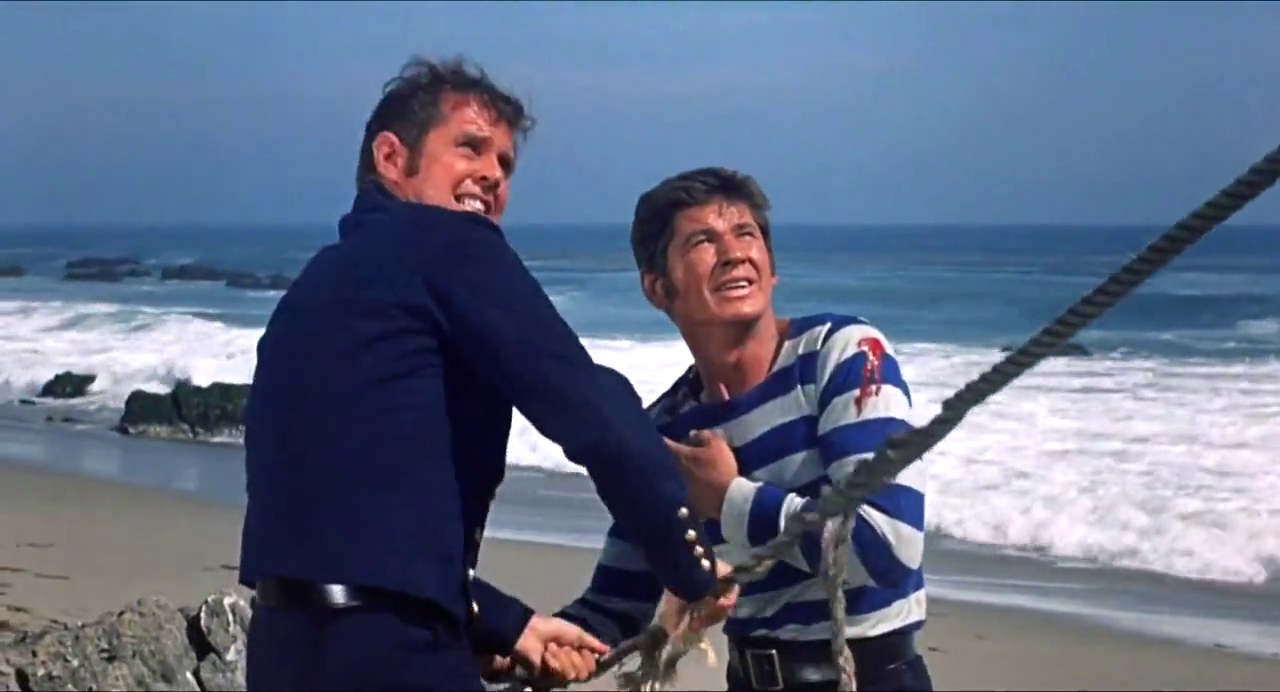
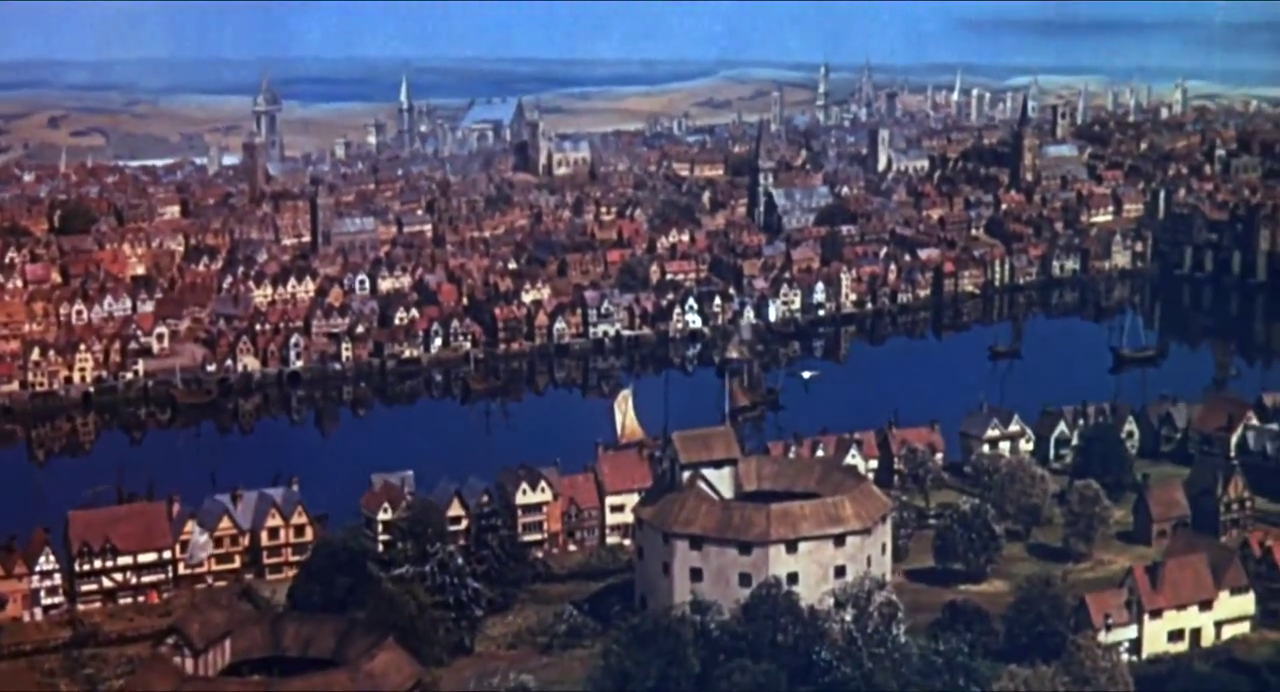
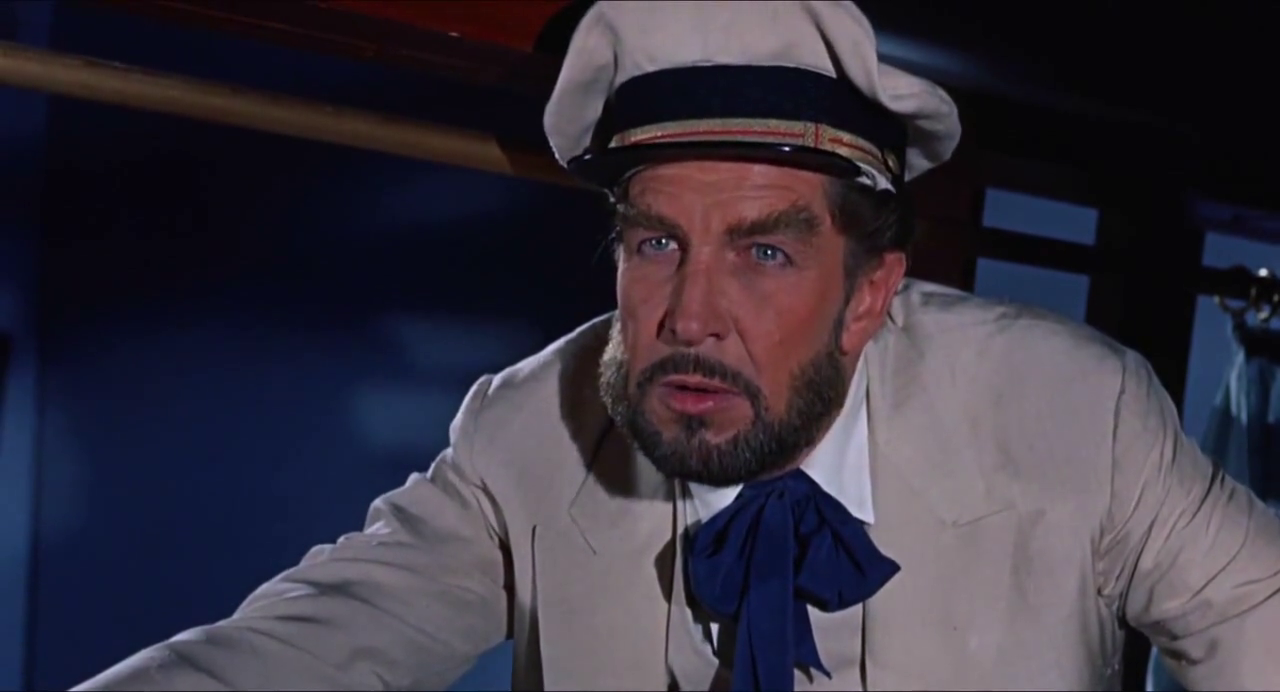
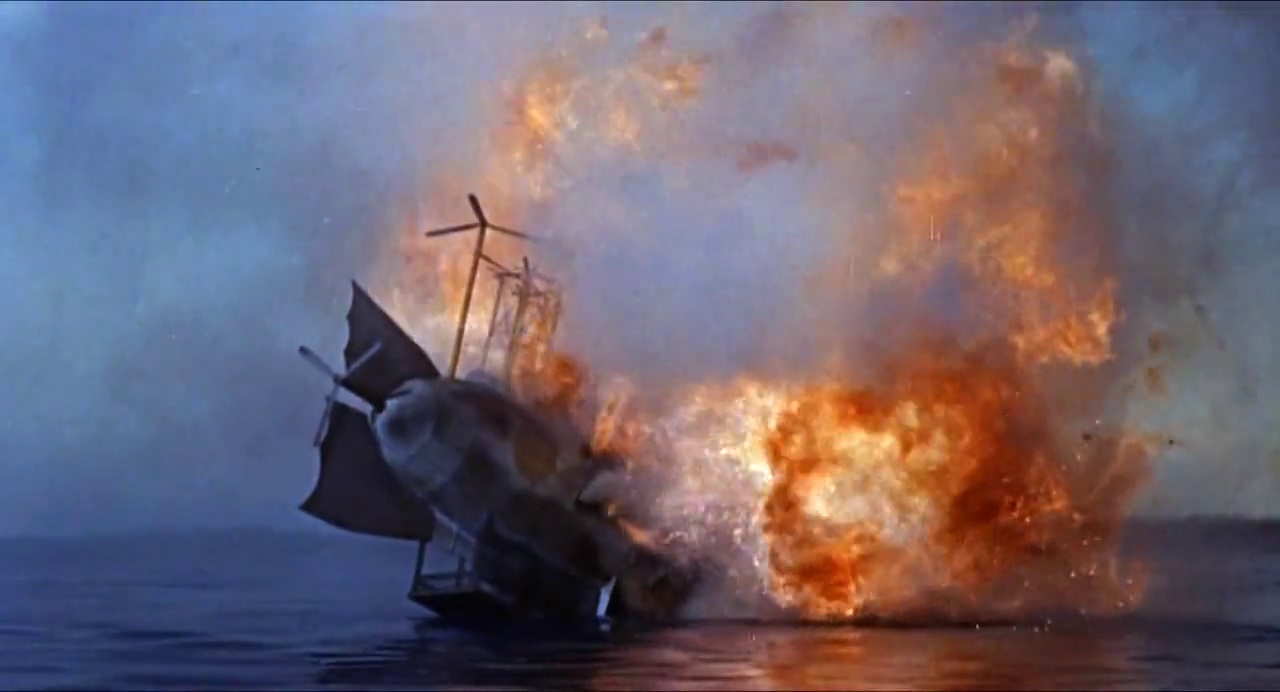

No comments:
Post a Comment